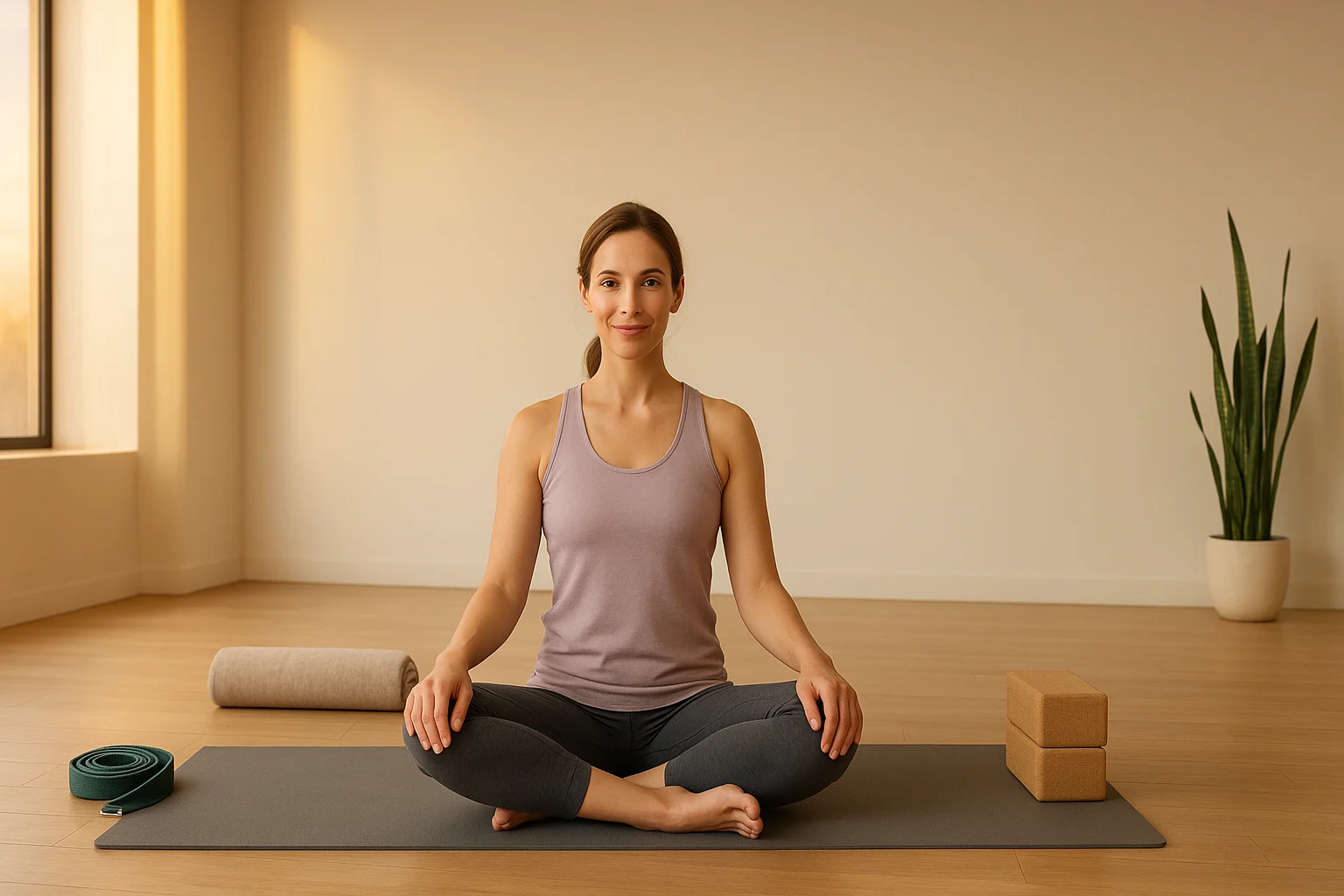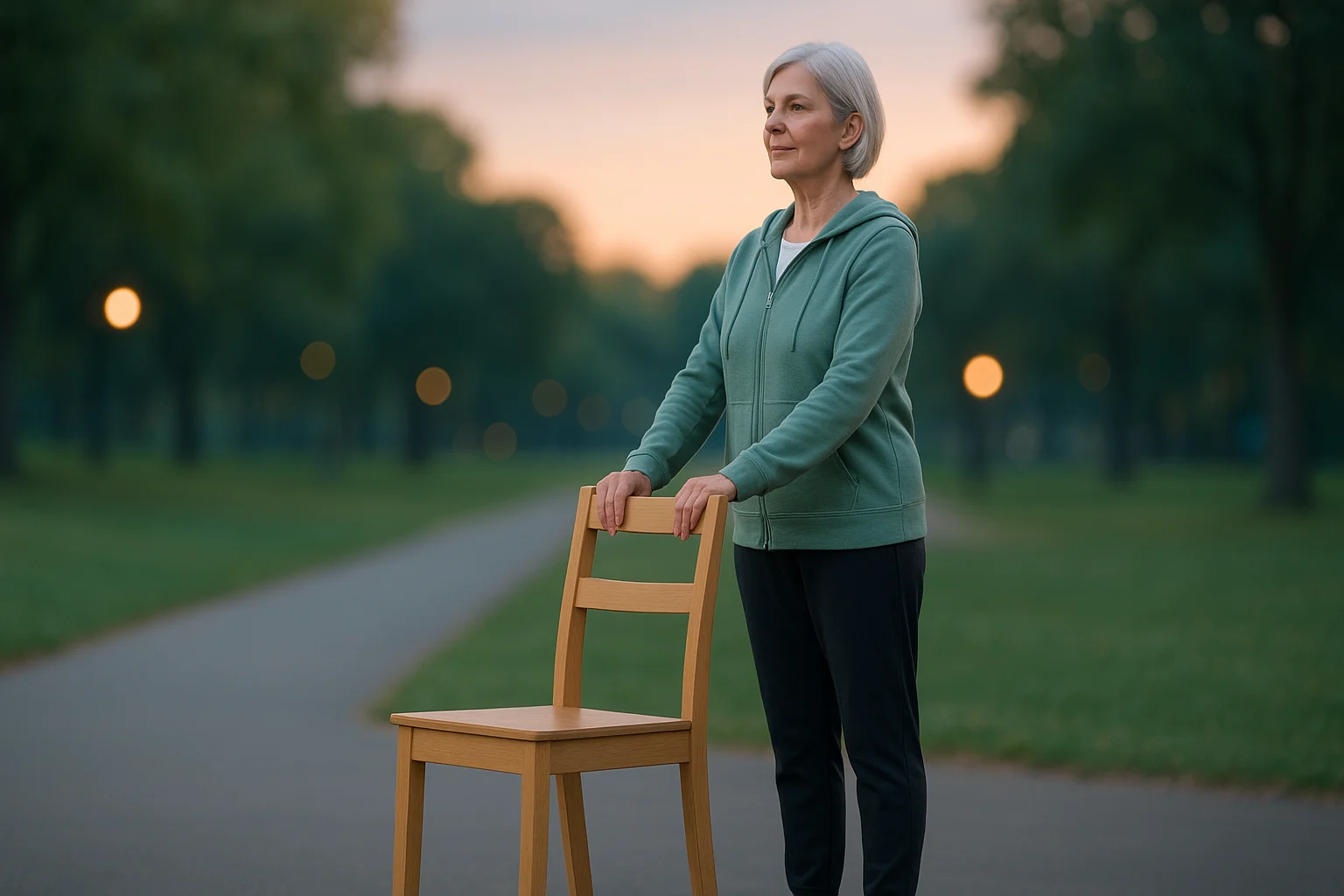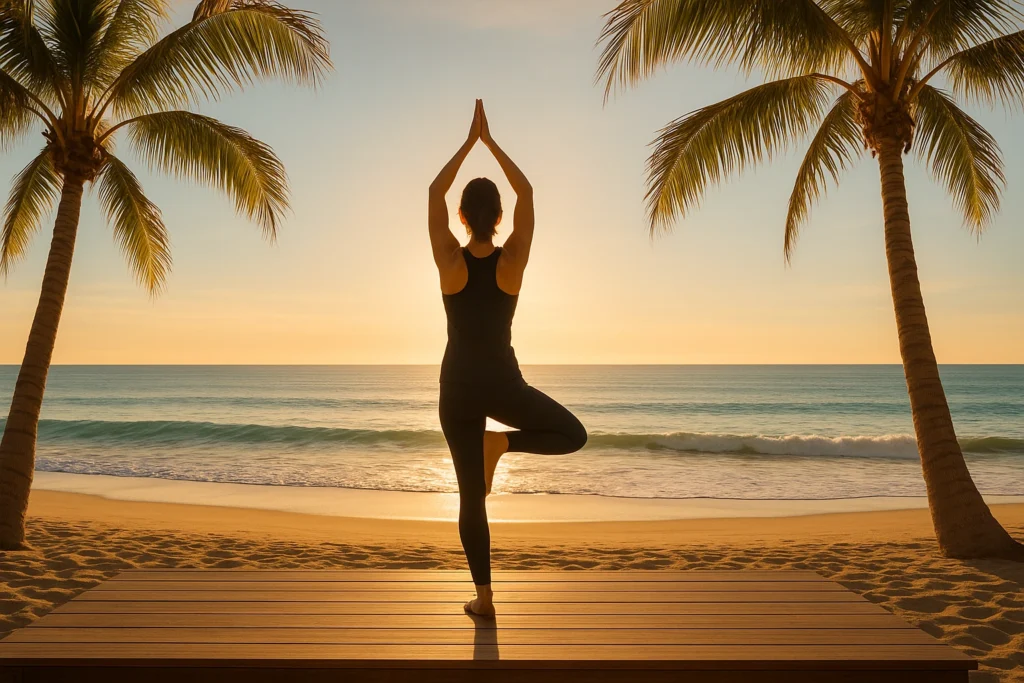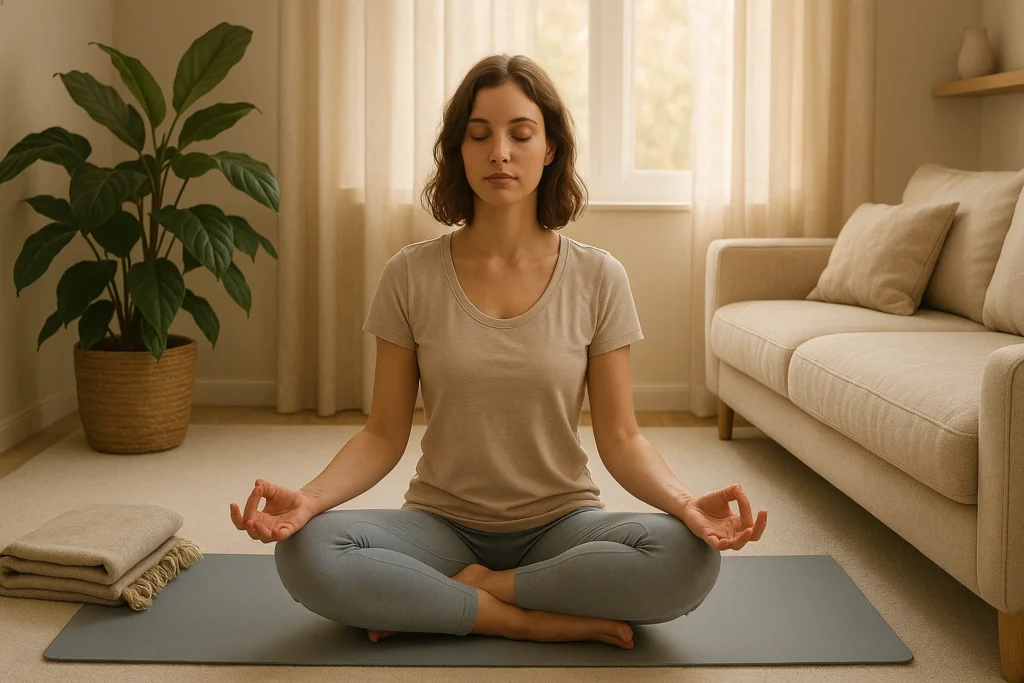
Yoga specialized health is a tailored way to practice when you’re dealing with chronic pain, pregnancy discomfort, or just a packed, stressful day. Picture waking up a bit less stiff, or feeling a little calmer even when life is loud. Rather than a one-size-fits-all routine, this approach adapts to your body—whether you’re managing arthritis, recovering from surgery, or easing stress. In this guide, you’ll find simple tweaks, smart use of props, and ways to work with your care team so practice feels supportive. Ready to begin? 🧘♀️✨
Yoga Specialized Health: Key Takeaways
- Highly Adaptable: This approach can be customized for chronic pain, arthritis, pregnancy, or neurological challenges.
- Safety First: Consult your doctor, listen to your body, and consider a qualified yoga therapist for a safe practice.
- Targeted Benefits: Specific poses and breathing techniques may ease pain and stiffness, reduce anxiety, and support mobility and digestion.
- Props as Allies: Chairs, blocks, and blankets make poses accessible and safe, especially for limited mobility.
- Holistic Integration: Combine yoga with your healthcare plan for supportive results, fostering collaboration with your medical team.
What is Yoga Specialized Health?
Yoga is more than stretching—it’s a flexible tool for well-being and support. In this specialized health yoga approach, we tailor the practice to your needs—chronic pain, pregnancy, stress, and more. These specialized yoga practices might mean using a chair for balance or leaning on breathwork to steady the mind. The aim is simple: a practice that feels safe, works, and fits your real life.
Why Choose Specialized Yoga?
Specialized yoga gives you a practical way to manage symptoms. Gentle movement can loosen stiffness, and simple mindfulness can ease stress. The NIH’s NCCIH overview on yoga’s effectiveness and safety summarizes evidence for pain relief, mobility, and sleep across different populations. It can also build strength, sharpen body awareness, and support better rest—so you feel more in control day to day.
The Mind-Body Connection
Stress can flare physical symptoms, and pain can kick up anxiety—the two feed each other. A steady yoga practice may help interrupt that loop by settling the nervous system. As B.K.S. Iyengar said, “Yoga teaches us to cure what need not be endured and endure what cannot be cured.” In modern practice, we interpret this as using yoga to support comfort and resilience alongside medical care.
Yoga for Health Conditions
If you’re managing arthritis, back pain, pregnancy, or stress, yoga for health conditions simply means adjusting poses, pace, and props so the practice fits your body today. Below you’ll see how to tailor common sequences without losing the benefits.
Safety Principles for Specialized Yoga
Before you dive in, here are a few basics to keep health-focused yoga safe and effective. Use them as a simple compass while you progress.
Consult Your Doctor
Start by checking in with your doctor or specialist. They know your history and can flag movements to skip—someone with osteoporosis, for example, may avoid deep forward bends. Good questions: “Which poses should I avoid?” and “What movements would help my condition most?”
Listen to Your Body
Your body is the guide here. Skip the “no pain, no gain” mindset—pain is a stop sign. If something feels sharp or pinchy, back out and adjust. Easy, comfortable stretching is fine; anything that bites isn’t. Respect your limits and tweak the pose.
Work with Qualified Instructors
Not every teacher is trained in therapeutic work. Look for a Certified Yoga Therapist (C-IAYT) or an instructor with hands-on experience in your condition. Share your needs before class so they can offer the right modifications.
Core Principles for Using Props
Props—chairs, blocks, blankets—make poses more accessible and safer on your joints. Try:
- Blocks: bring the floor closer for stability
- Straps: extend your reach without strain
- Bolsters: support restorative poses so you can truly rest
If you like following a plan, grab this free chair yoga PDF you can print and stick on the fridge.
Home Setup & Easy Prop Swaps
- No bolster? Roll two firm blankets or use stacked pillows.
- No strap? Use a belt or scarf.
- Sensitive knees? Double up a folded towel under them.
- Balance support: Practice near a wall, counter, or sturdy chair.
When to Pause and Seek Care
- New or worsening numbness, tingling, or weakness
- Severe or sharp pain that doesn’t ease with backing off
- Dizziness, fainting, chest pain, or shortness of breath
- Fever, infection, or unhealed surgical wounds
If any of the above show up, stop practice and speak with your clinician before continuing.
Yoga for Chronic Pain Relief
Chronic pain is exhausting. Gentle movement paired with steady breath can help turn the volume down and, over time, make daily life feel easier. For targeted shoulder relief, explore yoga for rotator cuff recovery. If back pain is your main issue, see gentle yoga for seniors with back pain.
Mindful Movement Techniques
Instead of pushing through pain, move with your body. Slow, small movements—like wrist circles or gentle spinal waves—help your system relearn that movement can be safe. Some research suggests that a regular yoga practice may lower pain sensitivity for some people.
Simple Flare-Up Plan
- Scale back to the easiest version of each pose (use a chair/wall).
- Cut duration by half and focus on breath-led movement.
- Finish with 5 minutes of supported rest (legs on a chair or bolster).
- Return to normal intensity only after 24–48 hours without a spike.
Recommended Poses
- Cat-Cow: Gently arch and round your spine, seated or on all fours, to ease back tension.
- Knees to Chest: Lie down, hug knees to chest with a strap if needed, to release lower back strain.
- Supported Child’s Pose: Use a bolster under your chest for a relaxing stretch.
Breathwork for Pain Relief
Deep belly breathing calms the nervous system. Try this: lie down, place a hand on your belly, inhale to feel it rise, and exhale slowly. Longer exhales reduce tension and pain perception.
Condition-Smart Breathwork
- Chronic pain: 4–6 breath (inhale 4, exhale 6) for 3–5 minutes.
- Stress/anxiety: Box breathing (4-4-4-4) for 2–3 minutes.
- Sleep prep: 4–7–8 for up to 4 rounds.
- Pregnancy or uncontrolled BP: avoid long breath holds; keep it gentle.
Case Study: Maria’s Journey
Maria, 52, lives with fibromyalgia and worried yoga might make things worse. Working with a yoga therapist, she kept it simple—restorative shapes and easy breath for a few minutes a day. A few months in, she noticed longer sleep and less morning stiffness. “Yoga gave me tools to live more comfortably,” she says.
This post has affiliate links. We may earn a commission. Learn more.

Yoga for Arthritis and Joint Health
When arthritis flares, joints often feel stiff and achy. Short bouts of gentle mobility plus light strength work can make everyday movement feel a little easier. For step-by-step ideas, see yoga for arthritis relief or yoga for knee arthritis.
Gentle Joint Mobility
Warm up with slow wrist circles and easy shoulder rolls to get the joints moving. Skip high-impact moves and keep transitions smooth to protect your joints. If you’re hypermobile, check out yoga for hypermobile joints for safe modifications.
Building Strength
Strong muscles support arthritic joints. For example, gentle chair poses strengthen quads to support knees. Isometric holds, like pressing feet into the floor, build strength without strain.
Pain Relief Techniques
Using gentle heat before practice may ease stiffness, and mindfulness can help shift focus from discomfort. Restorative poses like Legs Up the Wall can feel soothing; some people report less swelling or soreness.
| Joint Area | Challenges | Yoga Tips |
|---|---|---|
| Knees | Pain with bending | Use a chair; avoid deep squats. |
| Hips | Stiffness | Gentle hip circles; Chair Pigeon. |
| Hands/Wrists | Pain with gripping | Use forearms; gentle wrist exercises. |
Yoga During Pregnancy and Postpartum
Pregnancy is transformative, and yoga supports your changing body. It may ease discomfort, help you prepare for childbirth, and support postpartum recovery. To strengthen your core, try yoga for pelvic floor strength.
Benefits for Expecting Mothers
Yoga may ease back pain, lower stress, and support better sleep. It also builds the strength you’ll want for labor and gives you a calm space to connect with your baby.
Safe Poses and Modifications
After the first trimester, avoid lying on your belly or flat on your back. Use props for balance, and favor steady hip openers like Goddess or Bound Angle.
Pelvic Floor Focus
To support pregnancy and recovery, mix Kegels with gentle Bridge Pose, focusing on slow, controlled engagement and full release.
Yoga for Post-Surgery Recovery
Yoga can support recovery by gradually rebuilding strength and mobility—but go slowly. Get your doctor’s clearance first. For a step-by-step approach, see Recovery Yoga.
Gradual Movement
Begin with small, pain-free moves—start with breathwork or light arm swings. Add more only as your body heals.
Scar Tissue Management
Light stretching around—not on—the surgical site may help mobility; follow your clinician’s guidance.
Yoga for Mental Health and Stress
Yoga may help calm the mind and dial down anxiety, low mood, and stress by nudging the nervous system toward balance. For quick relief at work, try 5-minute desk yoga for posture relief.
Calming Techniques
Restorative poses, therapeutic yoga techniques, and breathwork like Nadi Shodhana can help balance emotions. Mindfulness helps you observe thoughts without judgment.
Evening Routine for Sleep
Try Legs Up the Wall or a gentle Supine Spinal Twist before bed to unwind; this may support better sleep quality. For targeted breathing, check out yoga for sleep apnea.
“Yoga does not just change the way we see things, it transforms the person who sees.” — B.K.S. Iyengar
Yoga for Neurological Conditions
Conditions like MS or Parkinson’s can limit mobility. Adaptive yoga aims to maintain function and manage fatigue. For specifics, see yoga for multiple sclerosis.
Maintaining Mobility
Use a chair or wall for support in poses like seated leg lifts. Keep movements slow and steady to build coordination and balance.
Managing Fatigue
Keep sessions short, include restorative poses, and budget your energy. Let your body—not the clock—set the pace.
Case Study: David’s MS Journey
David, 60, with MS, used wheelchair yoga to strengthen his legs and manage fatigue. “It didn’t reverse my MS, but it gave me control,” he says.
Yoga for Digestive Health
Digestive issues like bloating or IBS may be eased with yoga for some people. Gentle twists and breathwork may support digestion. Learn specific poses in yoga poses for digestion.
Stimulating Digestion
Try Seated Spinal Twist or Knees to Chest—gentle shapes that can nudge circulation toward the belly and may support digestion, easing discomfort for some people.
Stress and Digestion
Stress and the gut are teammates—for better or worse. Slow belly breathing and restorative shapes can help switch on the body’s “rest and digest” mode, which may ease bloating or IBS flare-ups.
For example, gentle twists may help stimulate peristalsis for some people.
Yoga for Menopause Symptoms
Menopause brings hot flashes and mood swings, but therapeutic yoga can help ease discomfort and may support hormonal balance. For targeted relief, explore yoga for menopause symptoms.
Therapeutic Yoga Approaches for Hot Flashes
Cooling breaths like Sitali, plus restorative poses, can settle the nervous system and take the edge off hot flashes. With Sitali, you inhale through a curled tongue to create a cooling effect.
Bone Health
Gentle weight-bearing work—Tree Pose with support, for example—may help maintain bone density alongside nutrition and medical care.
Adaptive Yoga for All Abilities
Adaptive yoga meets you where you are, whatever your mobility. The practice adapts to you—not the other way around. Beginners can start with seated yoga for beginners.
Chair Yoga Benefits
Perfect for seniors or those with limited mobility, chair yoga builds strength and flexibility. Try Seated Cat-Cow or Chair Warrior II. For a weight loss focus, see chair yoga for weight loss.
Wheelchair Yoga
Focuses on upper body and core strength with poses like Seated Side Bend or Arm Circles, improving daily function. Discover more in wheelchair yoga for seniors.
Working with Healthcare Providers
Collaboration is key. Your doctor, physical therapist, and yoga therapist form a team to support your wellness.
Finding a Yoga Therapist
Look for a C-IAYT yoga therapist who has worked with your specific condition. A brief intake chat helps them tailor a plan to your goals and limits.
Your Personalized Yoga Plan Generator
Use the tool below to find styles that fit your needs. Choose the concerns that apply to you and we’ll suggest gentle starting points.
Find Your Yoga Path 🧭
Tell us what you’re working with, and we’ll tailor ideas to match.
Your Personalized Yoga Plan
Select conditions and click “Generate My Plan” to start.
Best Practices for a Sustainable Practice
Building a lasting yoga practice takes consistency and care. Here’s how to make specialized yoga practices a steady part of your life.
Stay Consistent
Ten to fifteen minutes most days beats one long weekly session. Put it on your calendar like any appointment—and if you miss, just pick it up tomorrow.
Adapt and Progress
Your body changes day to day. Adjust poses to stay out of pain, and notice the small wins—better sleep, less stiffness, steadier mood.
Build Community
Join a specialized yoga class or an online group. Share what’s working (and what isn’t) with supportive teachers and friends.
Track What’s Getting Better
Once a week, jot down quick notes: pain (0–10), sleep quality, morning stiffness, mood, and one mobility marker (e.g., sit-to-stand reps in 30s). Small, steady gains add up—and tell you what’s working.
Frequently Asked Questions
Conclusion
Yoga specialized health is a supportive tool for wellness. When you tailor poses and prioritize safety, you may find you can manage pain, move with more ease, and feel calmer. Whether you’re navigating arthritis, pregnancy, or stress, this health-focused yoga meets you where you are. Try the personalized yoga plan generator above and connect with a therapist to get started. Your body deserves this care—embrace the change. ✨🙏


